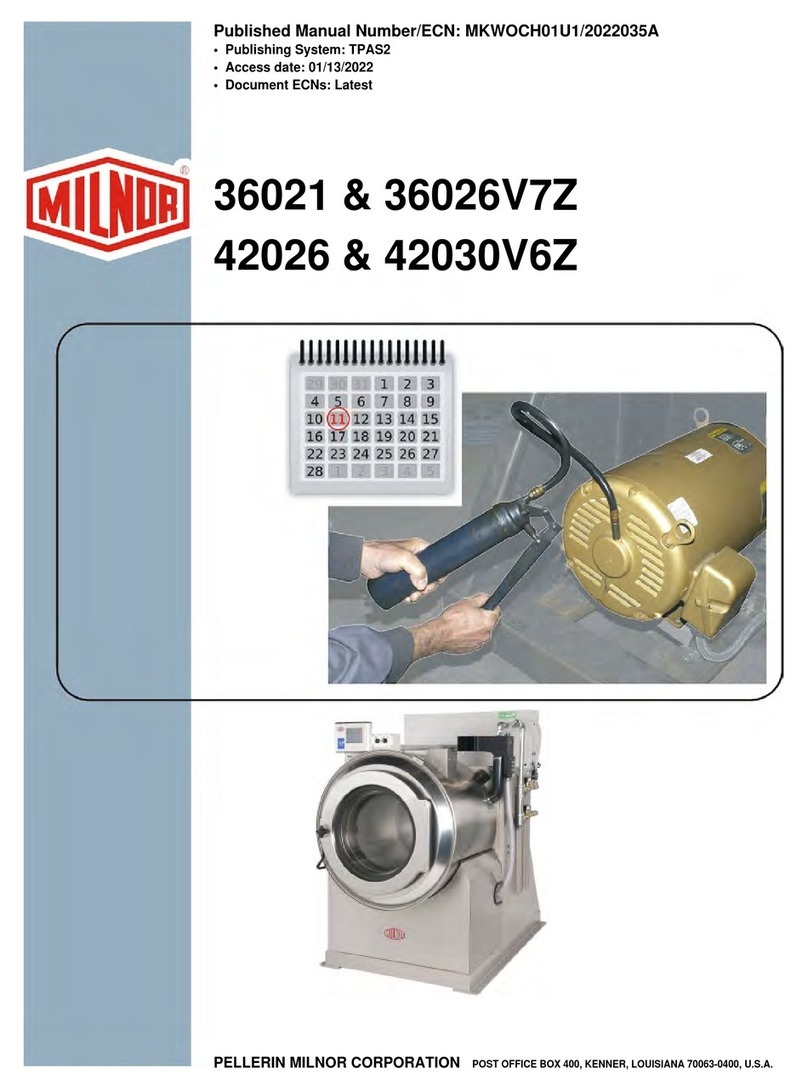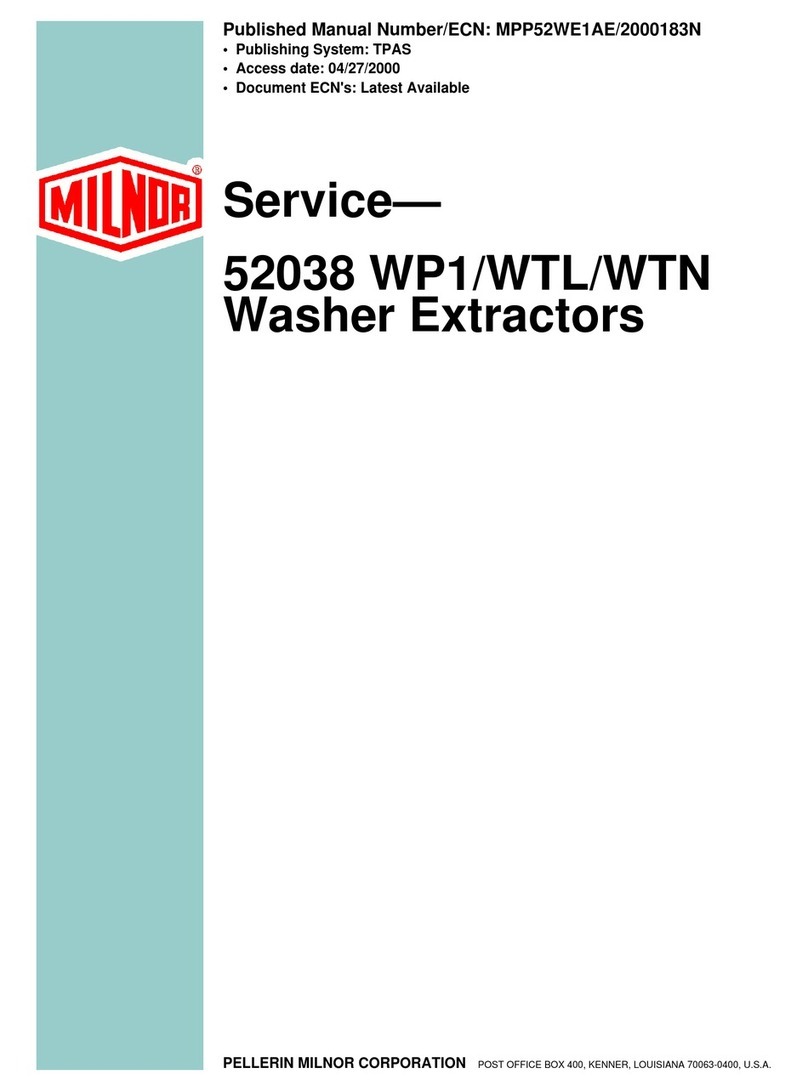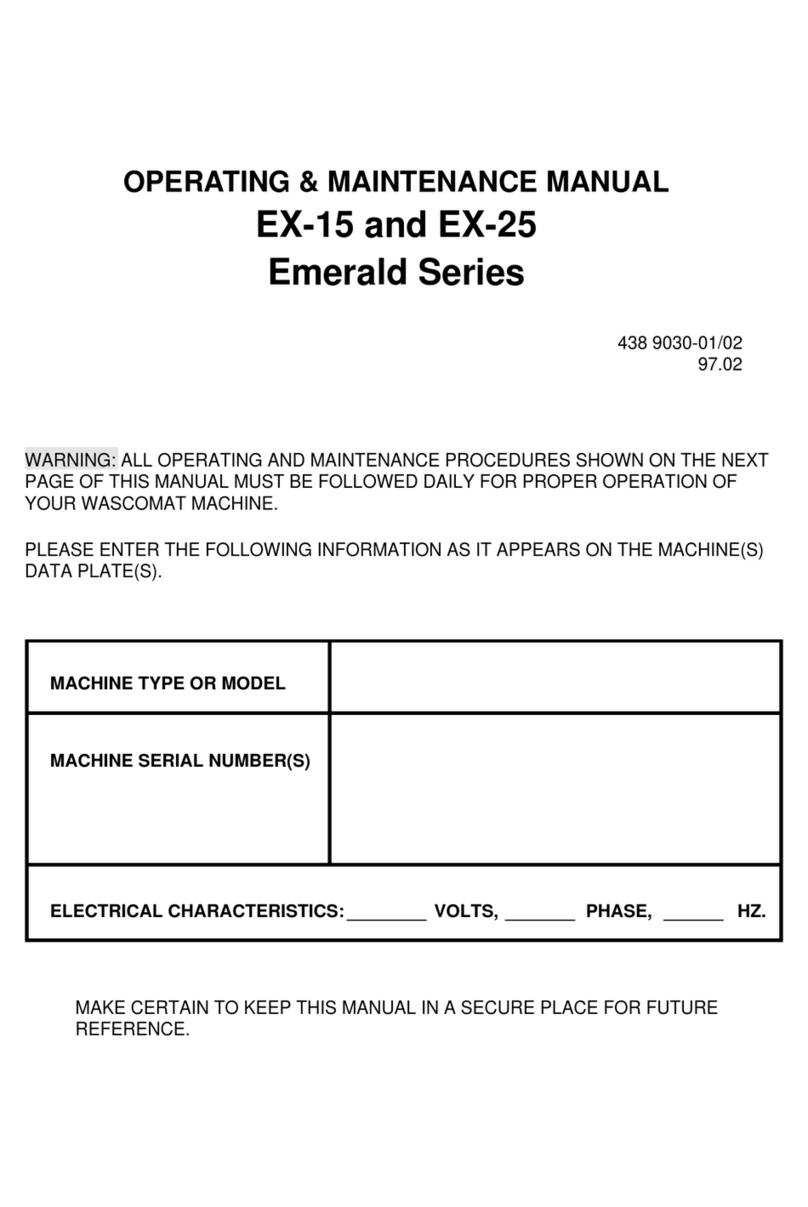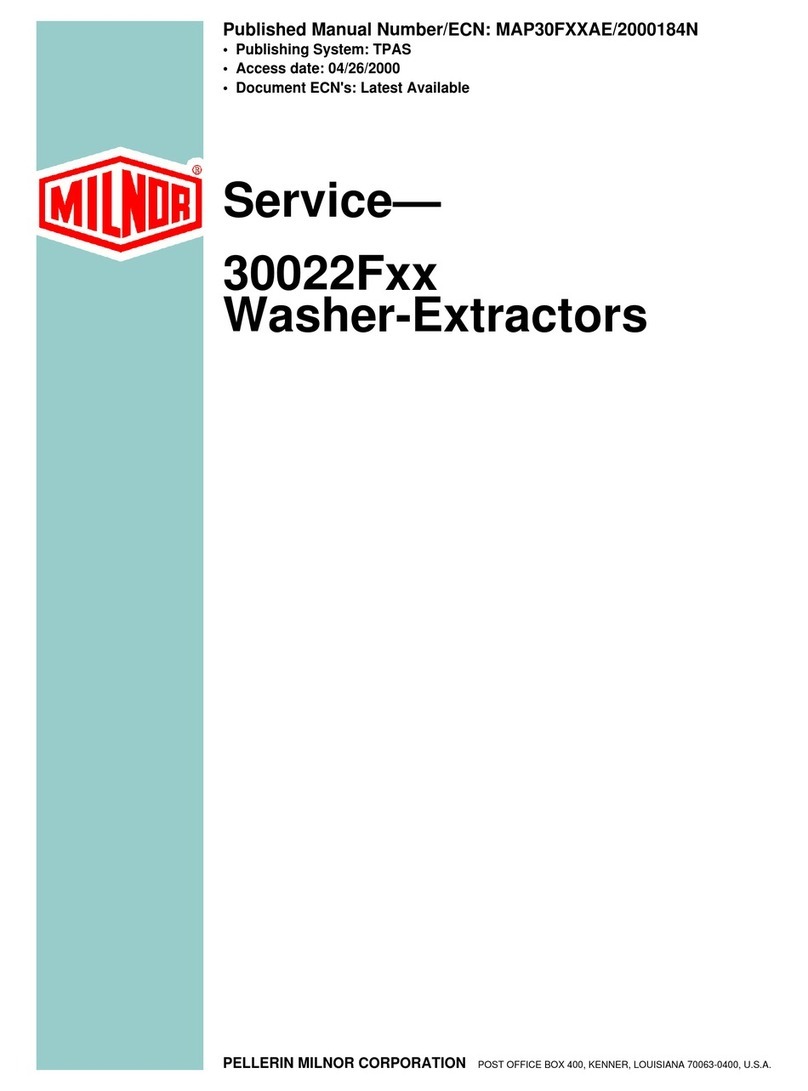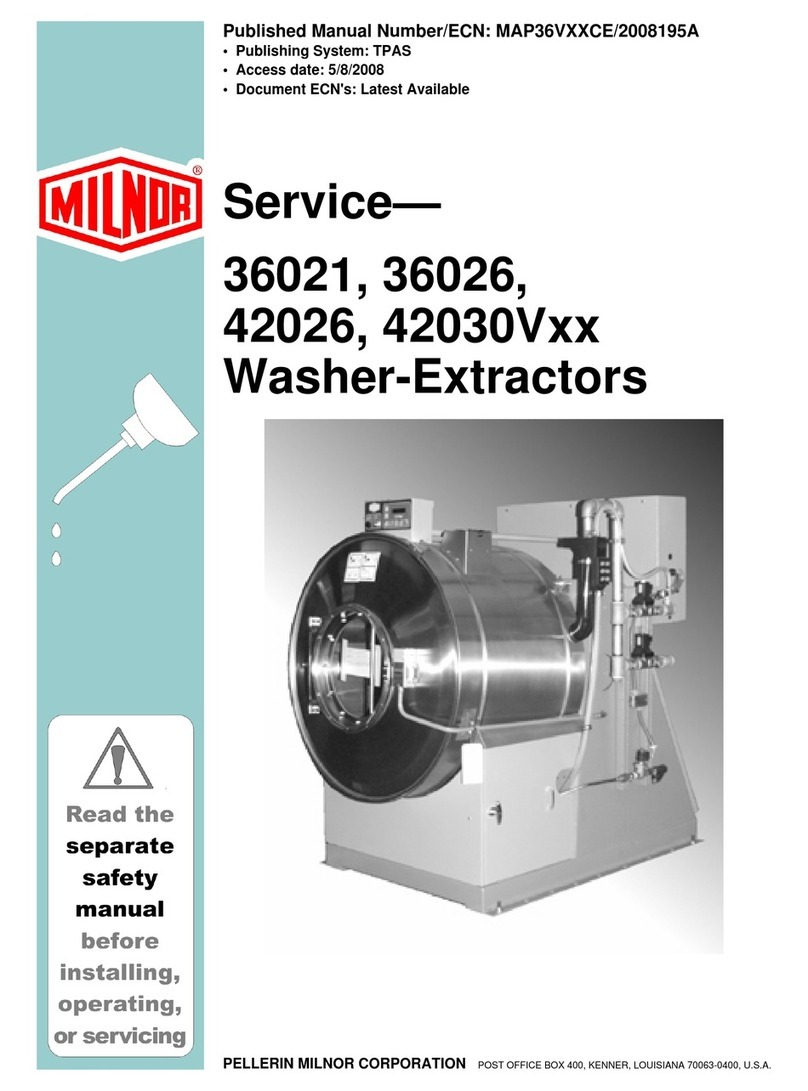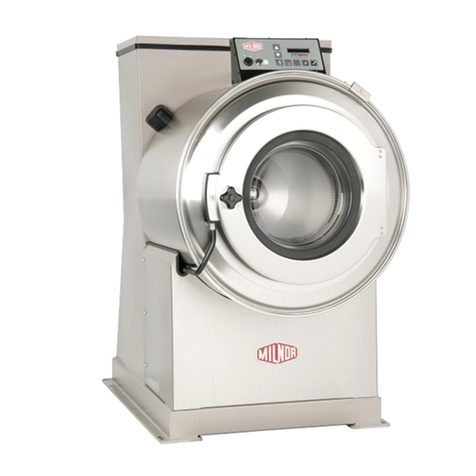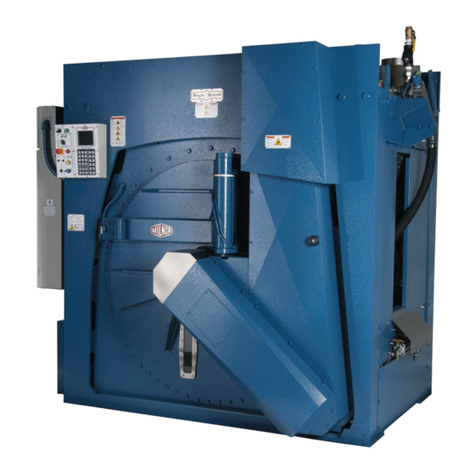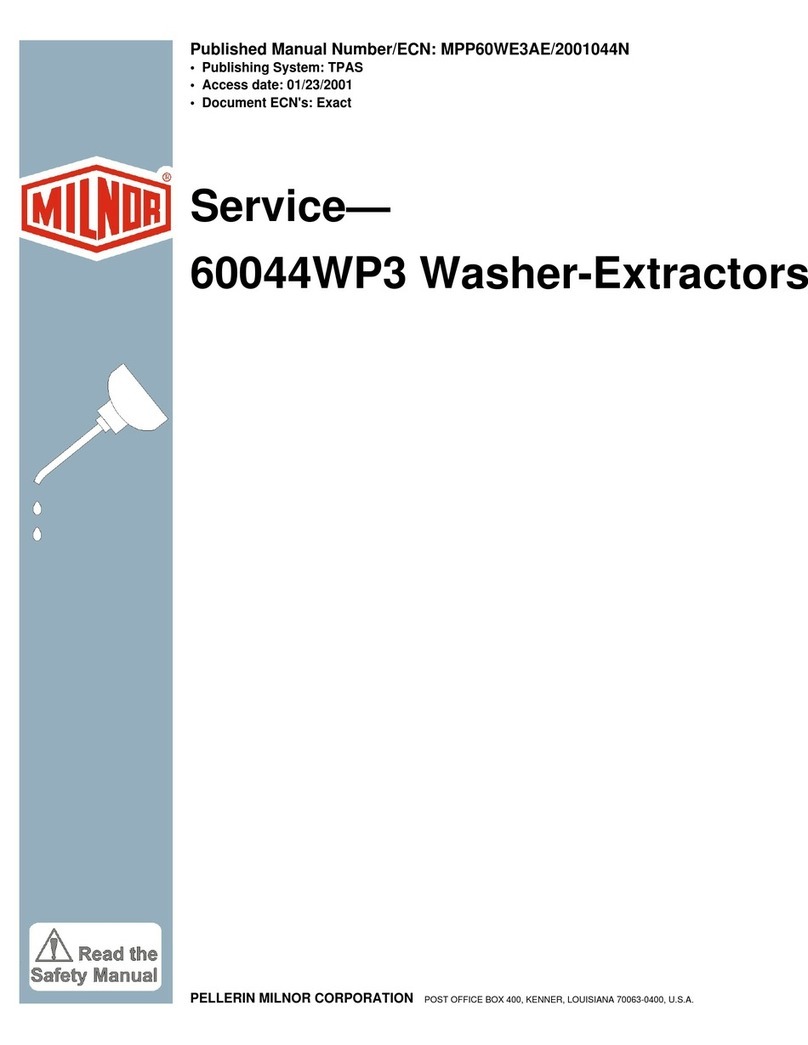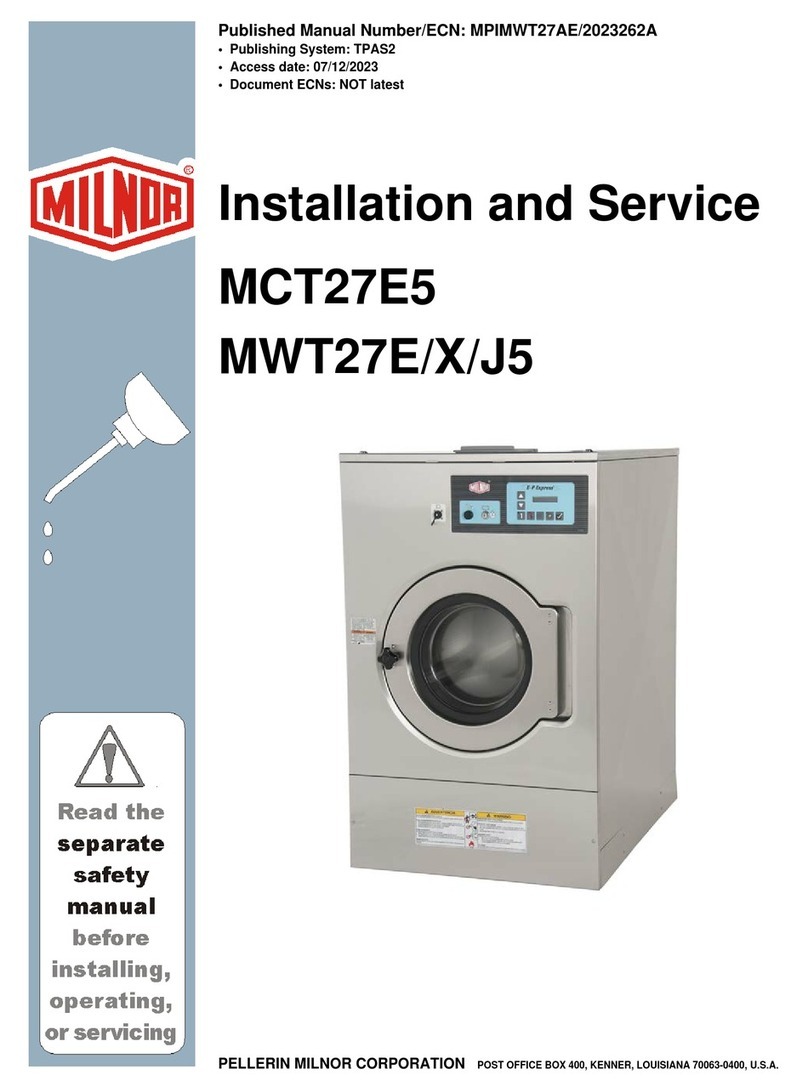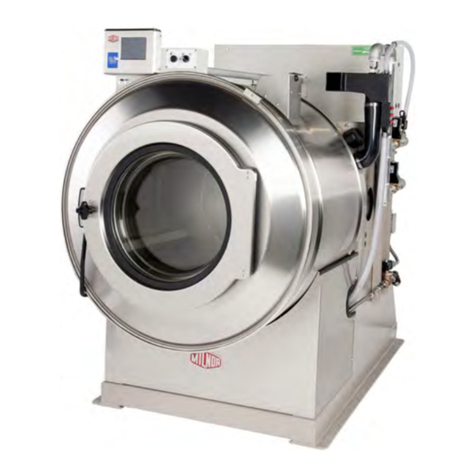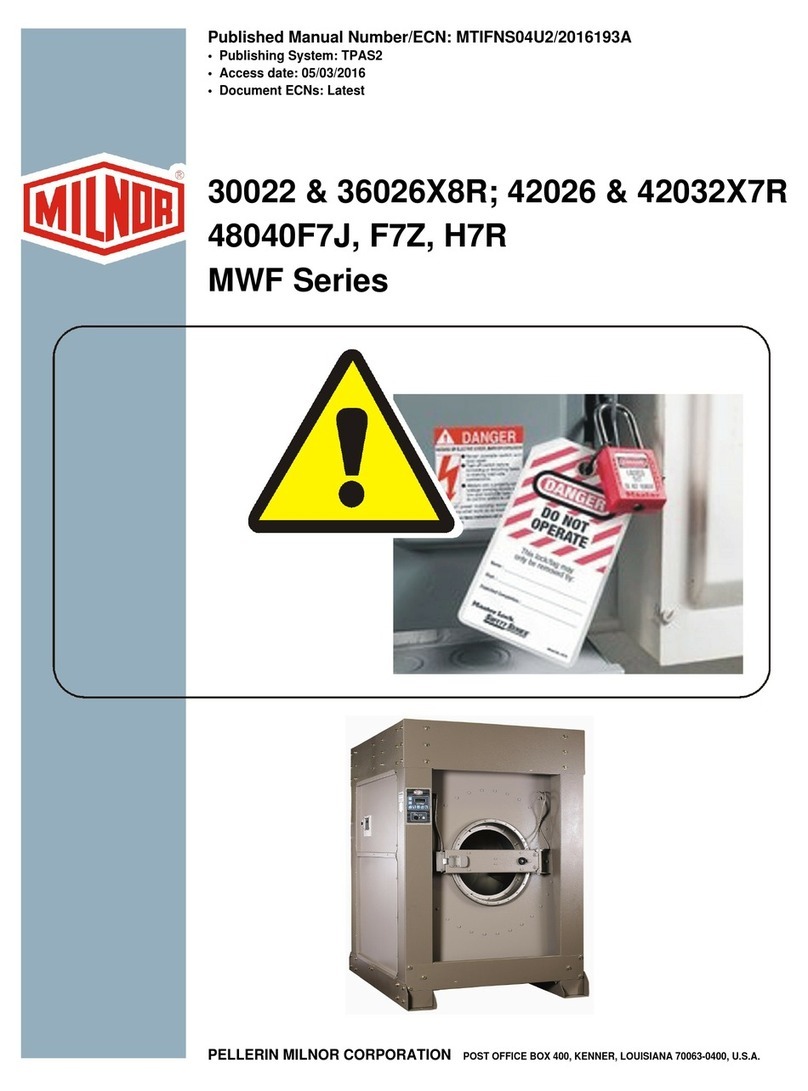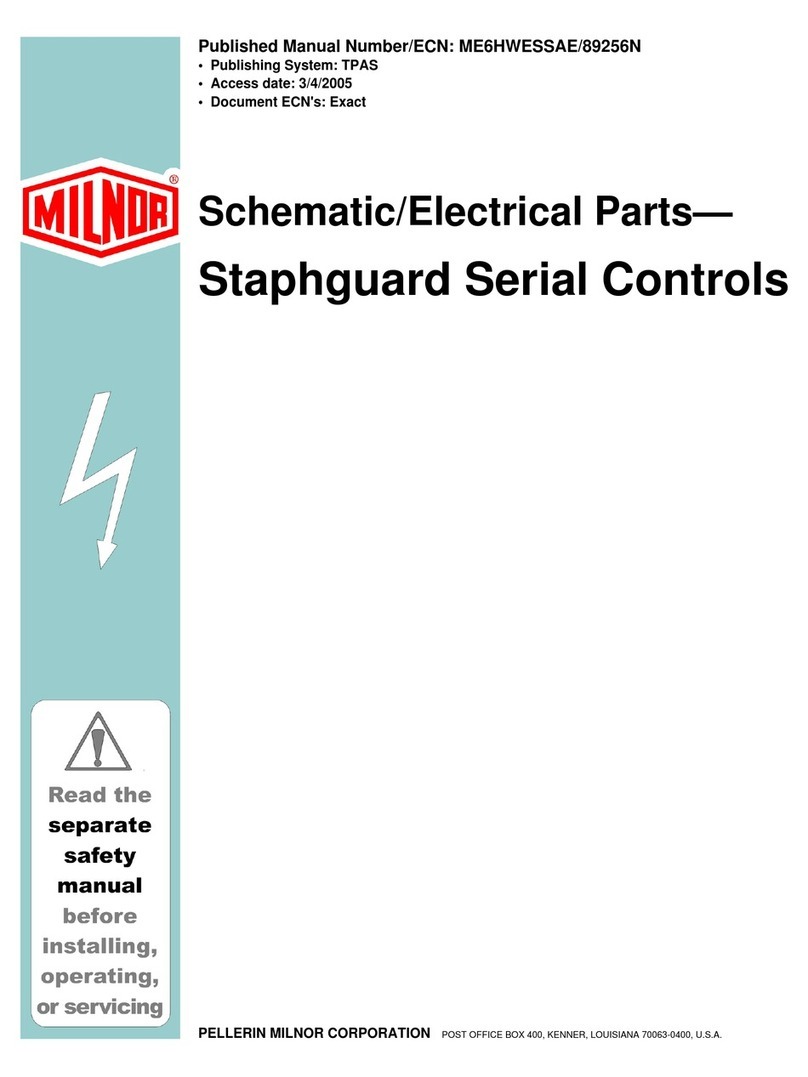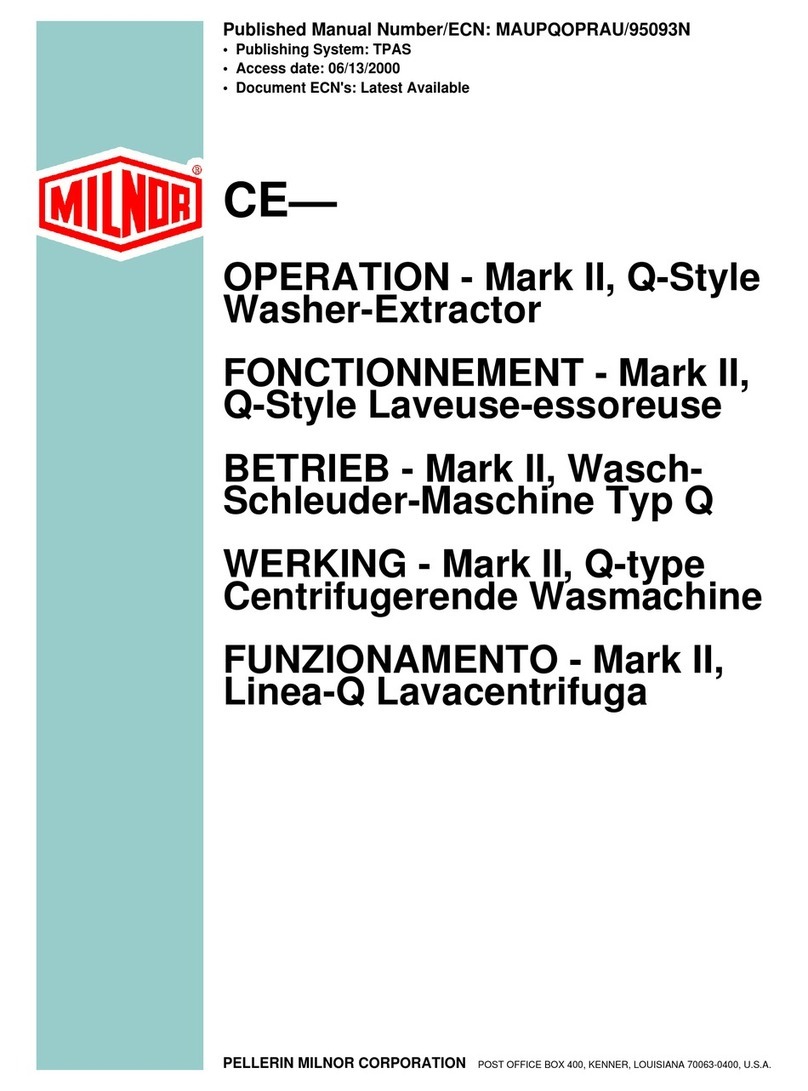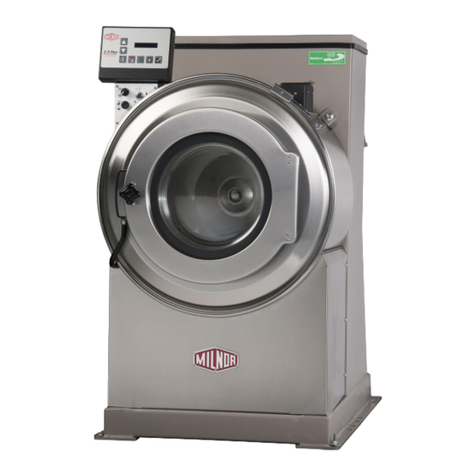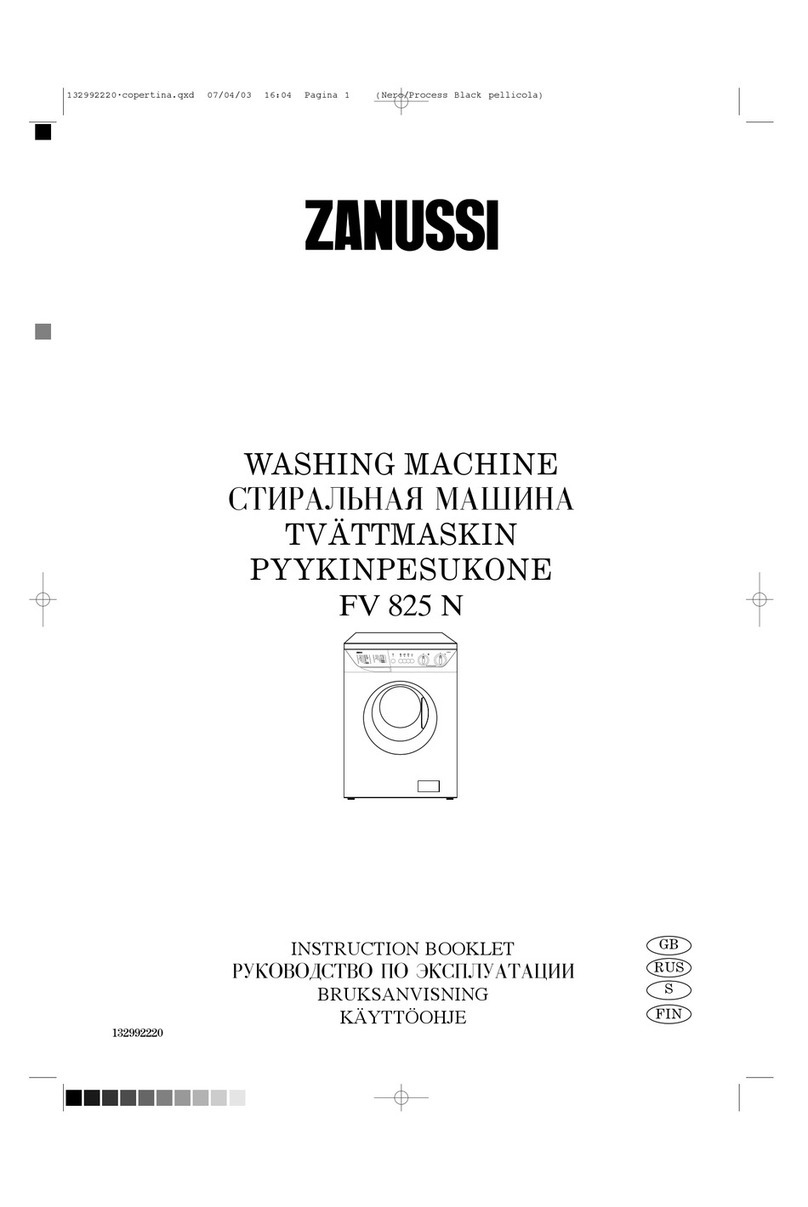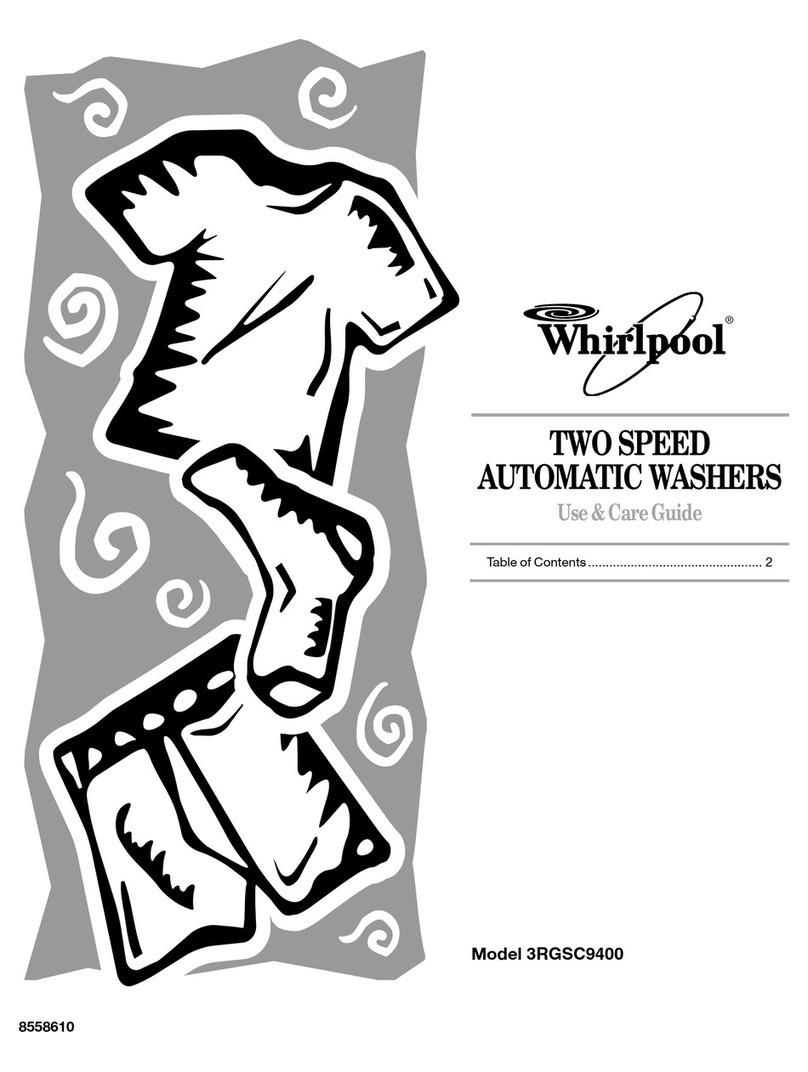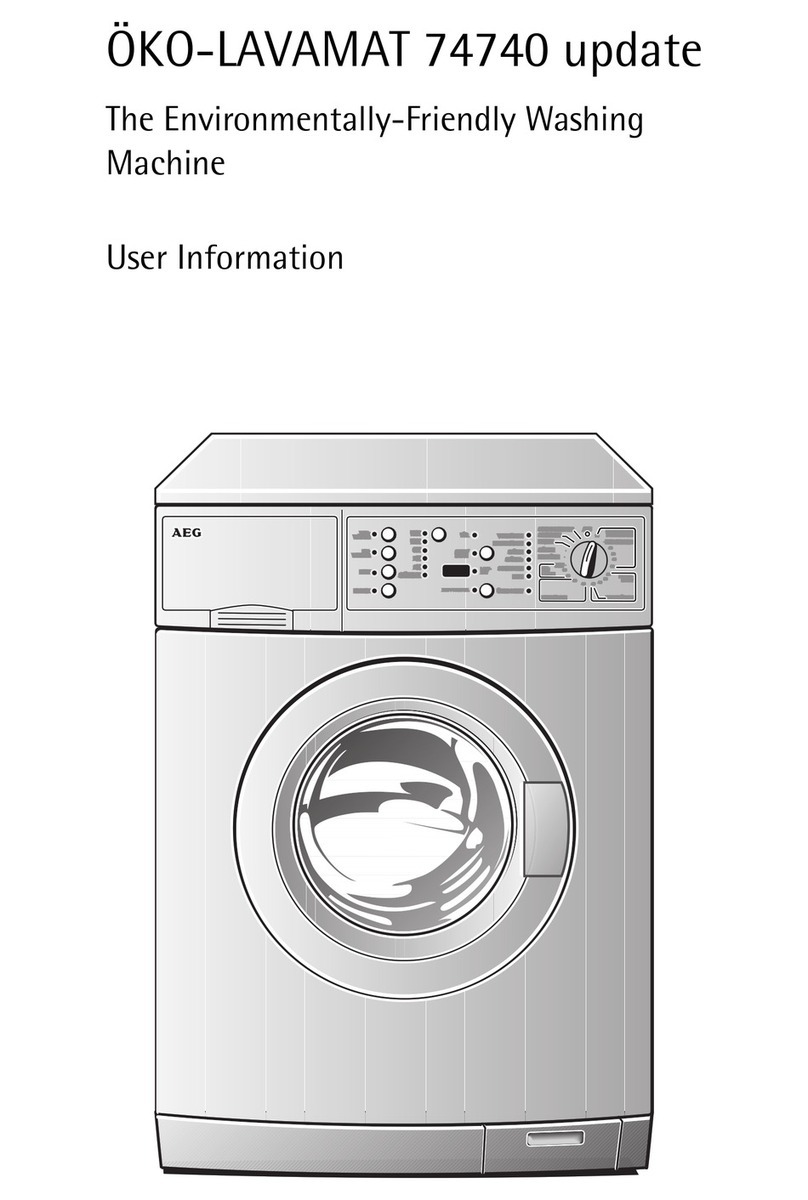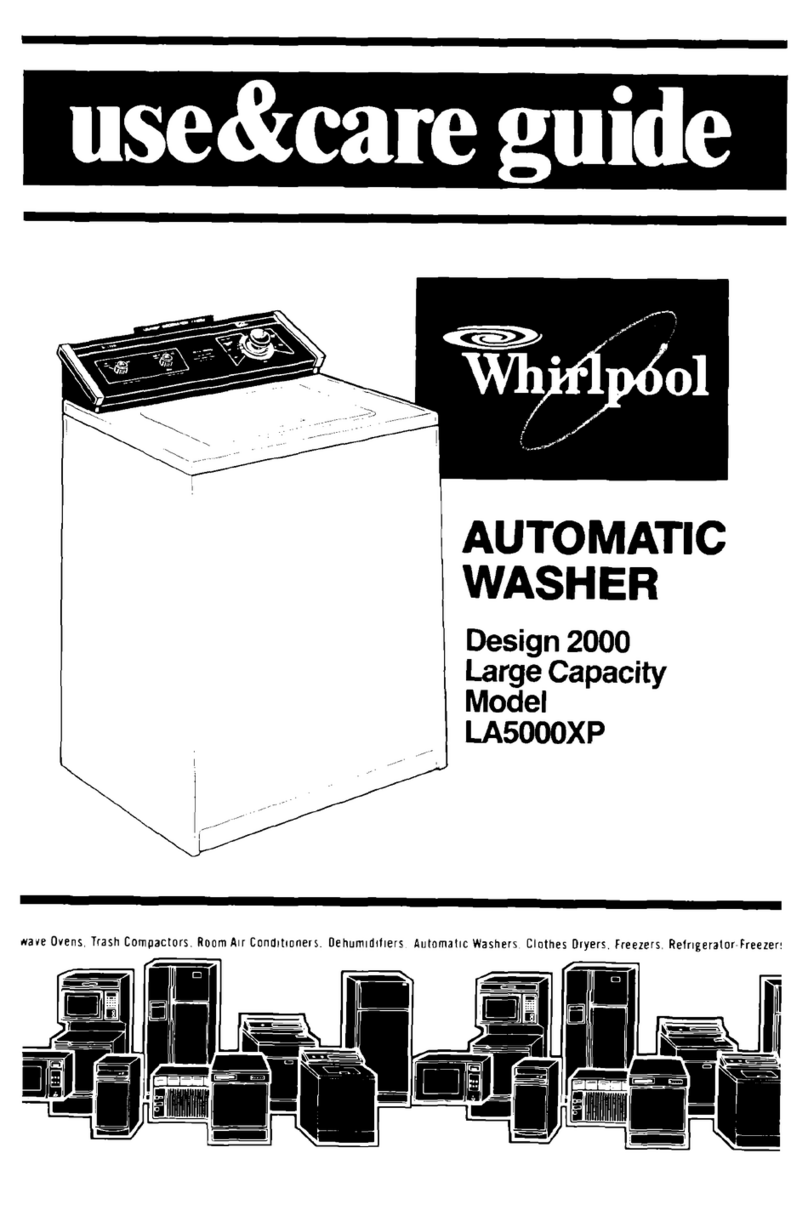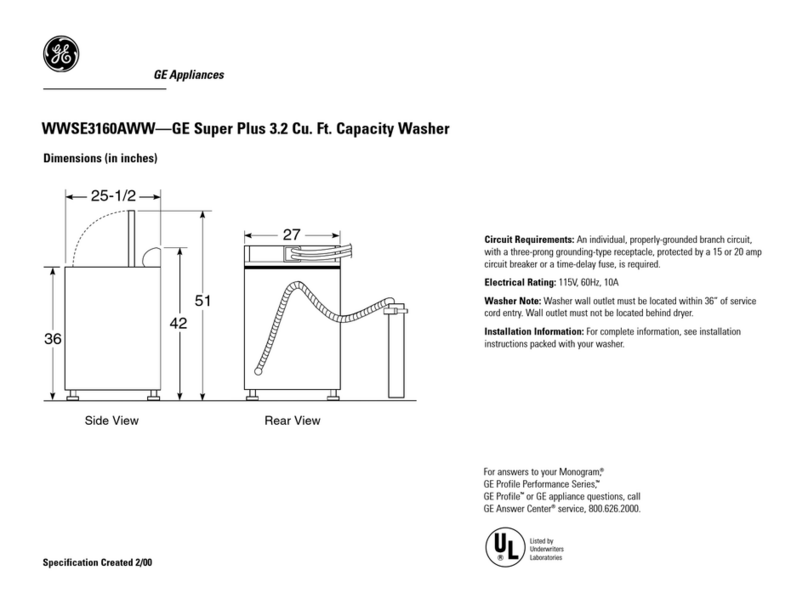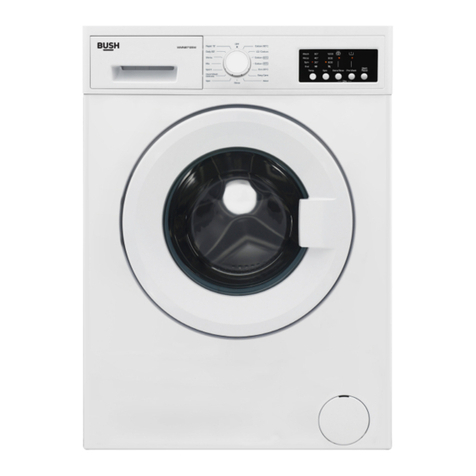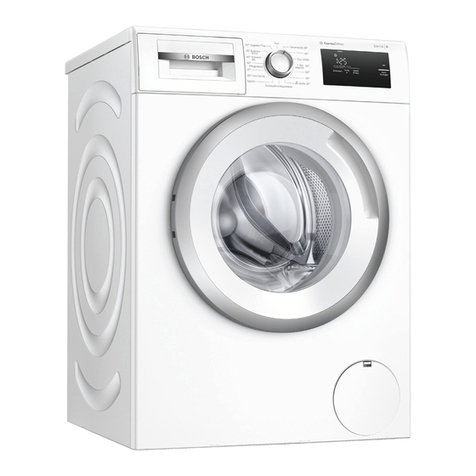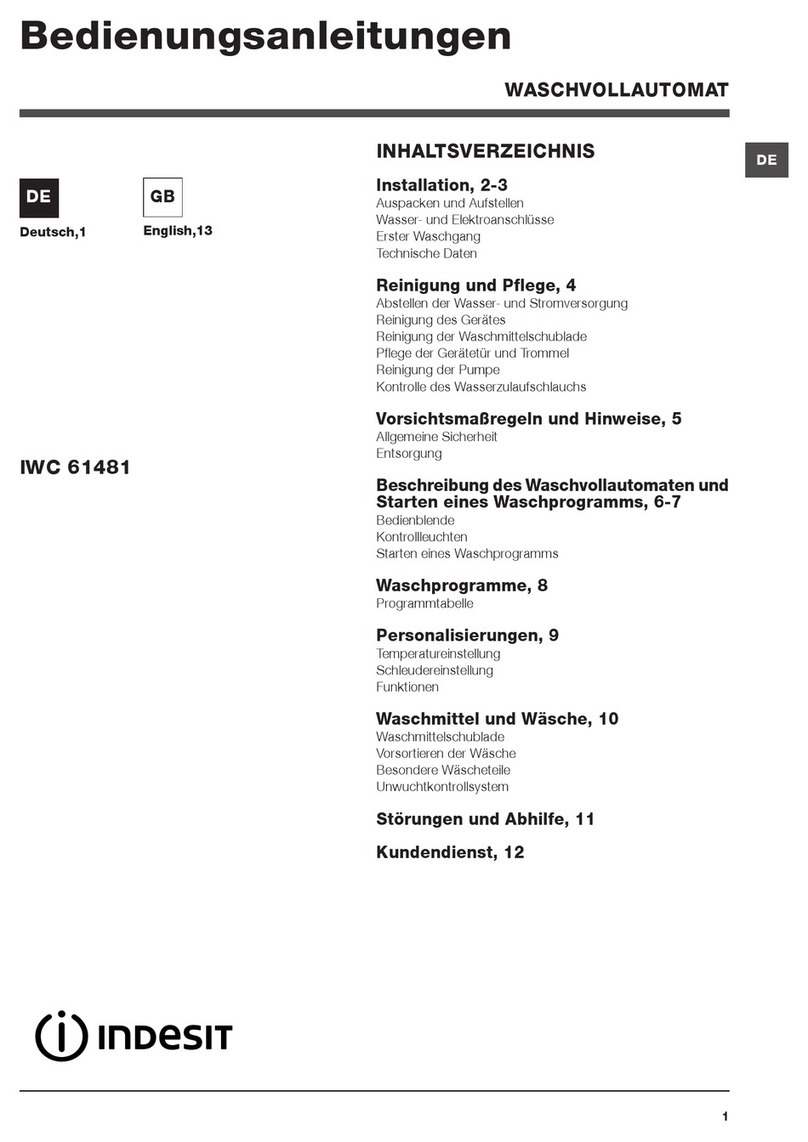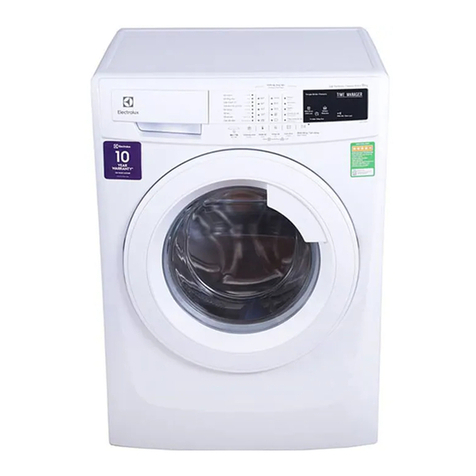
Table of Contents
PELLERIN MILNOR CORPORATION
Sections Figures, Tables, and Supplements
2.2. Prevent Damage From Chemical Supplies and Chemical
Systems (Document BIWUUI06)
2.2.1. How Chemical Supplies Can Cause Damage
2.2.1.1. Dangerous Chemical Supplies and Wash Formulas
2.2.1.2. Incorrect Configuration or Connection of Equipment Figure 2: Incorrect Configurations That
Let the Chemical Supply Go In the
Machine by a Siphon
Figure 3: Incorrect Configurations That
Let the Chemical Supply Go In the
Machine by Gravity
2.2.2. Equipment and Procedures That Can Prevent Damage
2.2.2.1. Use the Chemical Manifold Supplied. Figure 4: Examples of Manifolds for
Chemical Tubes. Your equipment can
look different.
2.2.2.2. Close the line.
2.2.2.3. Do not let a vacuum occur.
2.2.2.4. Flush the chemical tube with water.
2.2.2.5. Put the chemical tube fully below the machine inlet. Figure 5: A Configuration that Prevents
Flow in the Machine When the Pump
is Off (if the chemical tube and tank
have no pressure)
2.2.2.6. Prevent leaks.
Chapter 3. Routine Maintenance
3.1. Routine Maintenance—42-series, Divided Cylinder
Washer-extractor (Document BIUUUM09)
3.1.1. How To Show the Maintenance On a Calendar Table 1: Where to Put Marks On a
Calendar
3.1.2. Maintenance Summary Table 2: Guards and Related Components
Table 3: Filters, Screens, and Sensitive
Components
Table 4: Fluid Containers
Table 5: Components that Become Worn
Table 6: Bearings and Bushings. See Table
7 for Motors.
Table 7: Motor Grease Schedule. Use the
data in Section 3.1.4.2 to complete this
table.
Table 8: Mechanisms and Settings
3.1.3. How to Remove Contamination Table 9: Contamination Types, Cleaning
Agents, and Procedures
3.1.4. Lubricant Identification and Procedures Table 10: Lubricant Identification
3.1.4.1. Grease Gun Procedures
6
